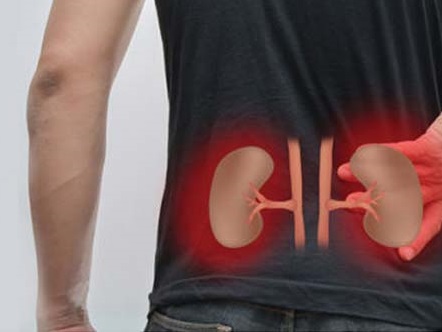Kidneys are amongst the most vital organs of your body. The main function of the kidneys is to filter your blood.
[the_ad id=”6114″]If the kidneys get damaged, the waste products and the fluids build up in your blood. Diabetes is a chronic condition that may damage your kidneys leading to a condition called diabetic nephropathy.
How Diabetes Causes Kidney Disease?
In chronic diabetic patients, small blood vessels can get damaged. If the blood vessels of the kidneys get injured, it leads them to become dysfunctional. Diabetes can also damage the nerves, making it difficult for the kidneys to empty the bladder. Consequently, pressure builds up in the kidneys injuring them. Also, the prolonged presence of urine in the kidneys can lead to infections due to high sugar levels in diabetic patients. Nearly 30% of patients with type I diabetes and about 10-40% of patients with type II diabetes develop kidney failure over a period.
Symptoms
At the initial stages, the only sign of diabetic kidney disease is high protein levels (i.e. albumin levels) in the urine. Some of the symptoms, which develop later, may include:
- Fluid retention
- Headache
- Nausea and vomiting
- Muscle cramps
- Puffiness around the eyes
- Dry and itchy skin
- Weight loss
Risk factors
Some of the risk factors of diabetic kidney disease may include:
- High blood pressure
- Poor control of blood glucose
- History of smoking
- Family history of kidney failure
Diagnosis
Diabetic nephropathy is diagnosed by using the following tests:
- Microalbuminuria urine test: It is used to check the albumin levels in urine. Higher than normal albumin levels in the urine is one of the signs for diabetic nephropathy.
- Blood pressure test: Elevated blood pressure can result in patients with diabetic nephropathy.
- Serum creatinine blood test: It is used to measure the creatinine levels in the blood. Higher blood levels of creatinine indicate kidney damage.
- Biopsy: Usually, this test is performed to identify whether the kidney damage is due to diabetes or other disease conditions.
- Kidney ultrasound: It is used to identify the size and shape of the kidneys. It also detects the infection or fluid collection within or around the kidneys.
- BUN blood test: It is used to check for the presence of urea nitrogen in your blood. Higher than normal levels of urea nitrogen may be the sign of kidney failure.
Treatment
The treatment aims to prevent or delay the progression of the disease and to reduce the risk of cardiovascular disease. The management of this condition includes:
- Prevention: It includes good control of blood glucose levels and blood pressure.
- Medication: Angiotensin-converting enzyme inhibitors and angiotensin receptor blockers are used to reduce the high blood pressure.
- Dialysis: It is a supportive treatment when the kidneys stop functioning normally. It involves either shunting the patient’s blood through a special machine that helps to remove the wastes by preserving water and salts or removing the wastes through fluid introduced into the abdomen.
- Kidney transplant: A healthy donor kidney is obtained either from someone who has died or from a relative or friend (from a compatible donor) to replace the diseased kidney.
Preventive Measures to Reduce the Risks
You can reduce the risk of diabetic nephropathy by following certain tips which include:
- Controlling the blood sugar levels
- Avoiding the use of non-steroidal anti-inflammatory drugs
- Treating the urinary tract infections
- Drinking plenty of non-alcoholic fluids
- Avoiding medical treatments that stress the kidneys
- Avoiding the use of tobacco products
- Exercising regularly
- Maintaining healthy weight
- Eating healthy foods
If you are a diabetic, go regularly to screenings for kidney disease. You can slow down the damage to kidneys by controlling your blood sugar levels. Seek your doctor’s help for early treatment.
Source:

